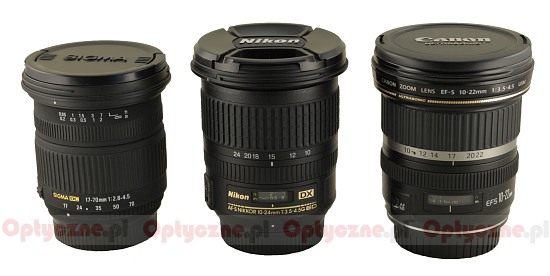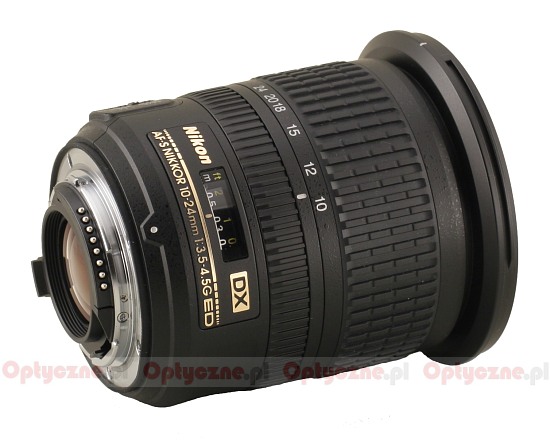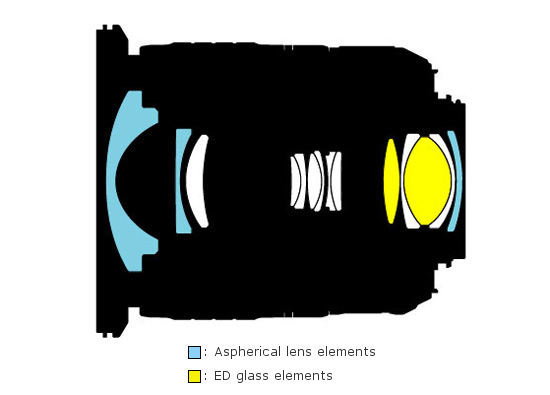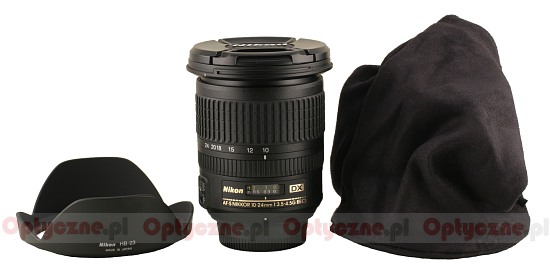Nikon Nikkor AF-S DX 10-24 mm f/3.5-4.5G ED
3. Build quality
 |
The lens starts with a metal bayonet mount from which peeks at us the rear lens element, about 2 cm in diameter. It protrudes the most for 10 mm focal length and it is hidden the deepest in the body for 24 mm. Right after the mount we find a plate with the lens’s name and parameters, together with a distance scale window with markings in feet and meters. On the same level that the distance scale, on the left, there is the autofocus mode switch (M/A –M) and opposite to it we see again the lens’s name, its serial number and a proud inscription “Made in China”. It is the first significant difference with the 12-24 mm predecessor, which has been made in Japan.
 |
Please Support UsIf you enjoy our reviews and articles, and you want us to continue our work please, support our website by donating through PayPal. The funds are going to be used for paying our editorial team, renting servers, and equipping our testing studio; only that way we will be able to continue providing you interesting content for free. |
- - - - - - - - - - - - - - - - - - - - - - - - - - - - - - - - - - - - - - - - - - - - - - - -
Then we meet a manual focus ring. Taking into account the overall dimensions, the ring could have been wider. It operates correctly though, and with due resistance, which allows to set precisely the required parameters. Running through the whole scale demands a 90 degrees turn. After that we find a large, ribbed and comfortable zoom ring. It works evenly and smoothly - with due resistance and without unnecessary slacks. Next, there is the front element system with a filter thread, which was mentioned before.
The comparison between the Nikkor’s 10-24 mm parameters and those of other small sensor lenses, with focal length starting at 10 mm and ending at 20-24 mm is presented in the following chart. We took into consideration the newest Sigma and Tamron products, forgetting for a while about their predecessors. This comparison shows clearly that the Nikkor is the most complicated optically of all, as it contains 14 elements in 9 groups. It’s worth notice that we find inside as many as two Extra low-Dispersion ED glass elements and three aspherical elements. It also contains a circular aperture with 7 diaphragm blades, which can be closed down to f/22-29.
 |
It is worth comparing the Nikkor 10-24 to the 12-24 mm model of the same company, which didn’t impress us much in the tests. This comparison is presented in the following chart. It is clearly seen that the older model with the constant f/4.0 aperture and a smaller focal range, although more expensive, was also a simpler device, with only 11 elements in 7 groups.
The buyer gets the following accessories: a petal-type hood, both caps and a soft case
 |






